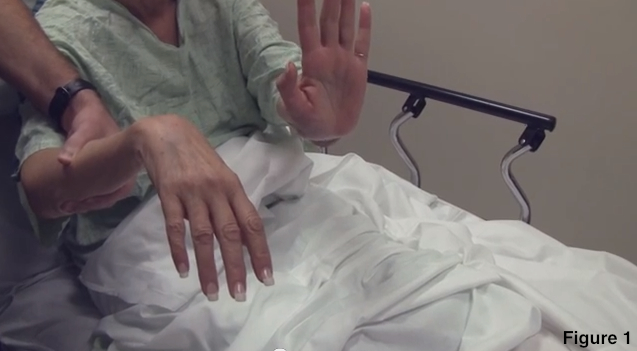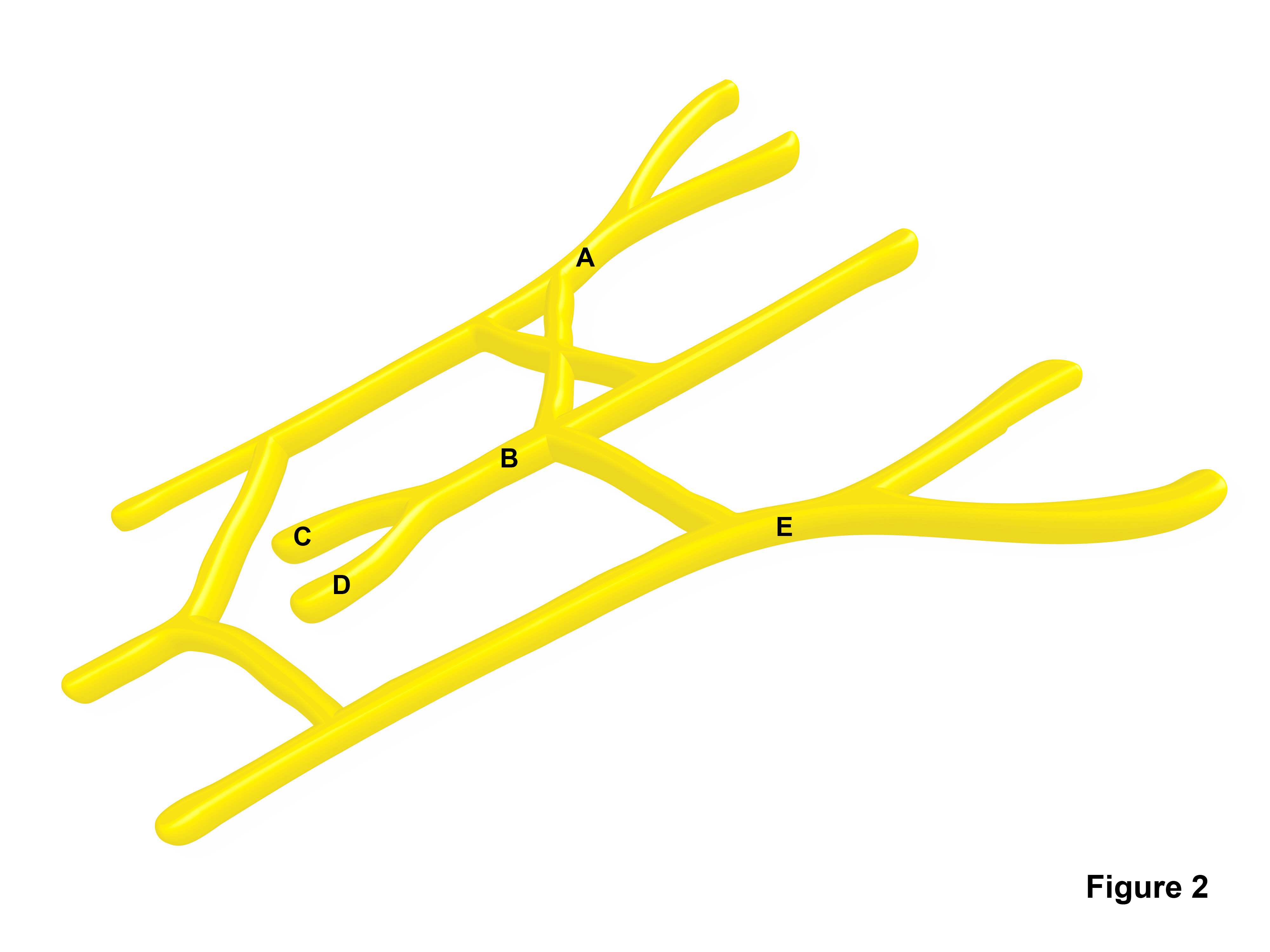WBR0553
| Author | PageAuthor::William J Gibson |
|---|---|
| Exam Type | ExamType::USMLE Step 1 |
| Main Category | MainCategory::Anatomy |
| Sub Category | SubCategory::Musculoskeletal/Rheumatology, SubCategory::General Principles |
| Prompt | [[Prompt::A 63-year-old woman presents to the emergency room concerned that she has suffered a stroke after noticing some paralysis of her right wrist. The patient awoke with this motor deficit after sleeping with her right arm suspended over the armrest of her chair. The patient is able to move the shoulder and abduct the arm without difficulty. Figure 1 depicts the patient after being asked to extend both wrists. Which of the points on Figure 2 is most likely injured in this patient? |
| Answer A | AnswerA::A |
| Answer A Explanation | AnswerAExp::'''Incorrect:''' Point A indicates Erb’s point, the union of the C5 and C6 roots of the brachial plexus. Injury of the C5-C6 nerve roots is responsible for Erb’s palsy. |
| Answer B | AnswerB::B |
| Answer B Explanation | [[AnswerBExp::Incorrect: Point B represents the posterior cord of the brachial plexus, which gives rise to the axillary and radial nerves. While posterior cord injury would cause weakness of the deltoid muscle (through loss of axillary nerve fibers) the patient would exhibit additional symptoms arising from loss of radial nerve function, such as wrist drop.]] |
| Answer C | AnswerC::C |
| Answer C Explanation | [[AnswerCExp::Incorrect: Point C represents the axillary nerve, which can be injured by fractures near the surgical head of the humerus. The axillary nerve innervates the deltoid muscle, which is responsible for abduction of the arm beyond 30 degrees from the body.]] |
| Answer D | AnswerD::D |
| Answer D Explanation | AnswerDExp::'''Correct:''' Point D represents the radial nerve. The radial nerve can be injured in conditions such as “Saturday night palsy”, in which the patient will exhibit weakness of the wrist extensors. |
| Answer E | AnswerE::E |
| Answer E Explanation | AnswerEExp::'''Incorrect:''' Pont E represents the union of the C8-T1 roots of the brachial plexus. This area can be injured in Krumpke’s palsy which causes “total claw” deformity of the hand due to lumbrical dysfunction. |
| Right Answer | RightAnswer::D |
| Explanation | [[Explanation::The patient in this vignette has suffered a lesion of the radial nerve due to extended compression of the radial nerve in the spiral groove while asleep overnight. Radial nerve palsy following such incidents is referred to as “Saturday night palsy.” Because the radial nerve innervates the extensors of the wrist, the main feature of injury is wrist drop. Figure 1 depicts the inability of the patient to extend the left wrist. More proximal lesions of the brachial plexus, such as posterior cord injury, can lead to wrist drop. However, more proximal injuries will also injure the axillary nerve and cause problems with shoulder abduction.
Educational Objective: The radial nerve can be injured in conditions such as “Saturday night palsy”, in which the patient will exhibit weakness of the wrist extensors. References: First Aid 2012 page 409.
Educational Objective: |
| Approved | Approved::Yes |
| Keyword | WBRKeyword::Radial nerve, WBRKeyword::Radial, WBRKeyword::Arm, WBRKeyword::Upper limb, WBRKeyword::Brachial plexus, WBRKeyword::Brachial, WBRKeyword::Radial nerve palsy, WBRKeyword::Wrist |
| Linked Question | Linked:: |
| Order in Linked Questions | LinkedOrder:: |

